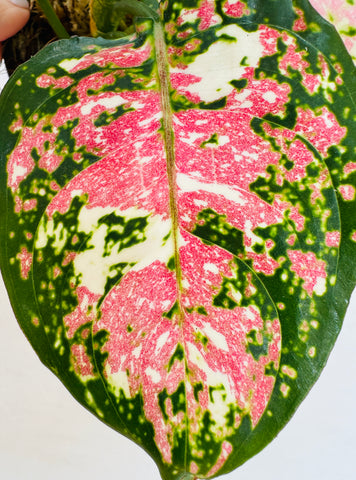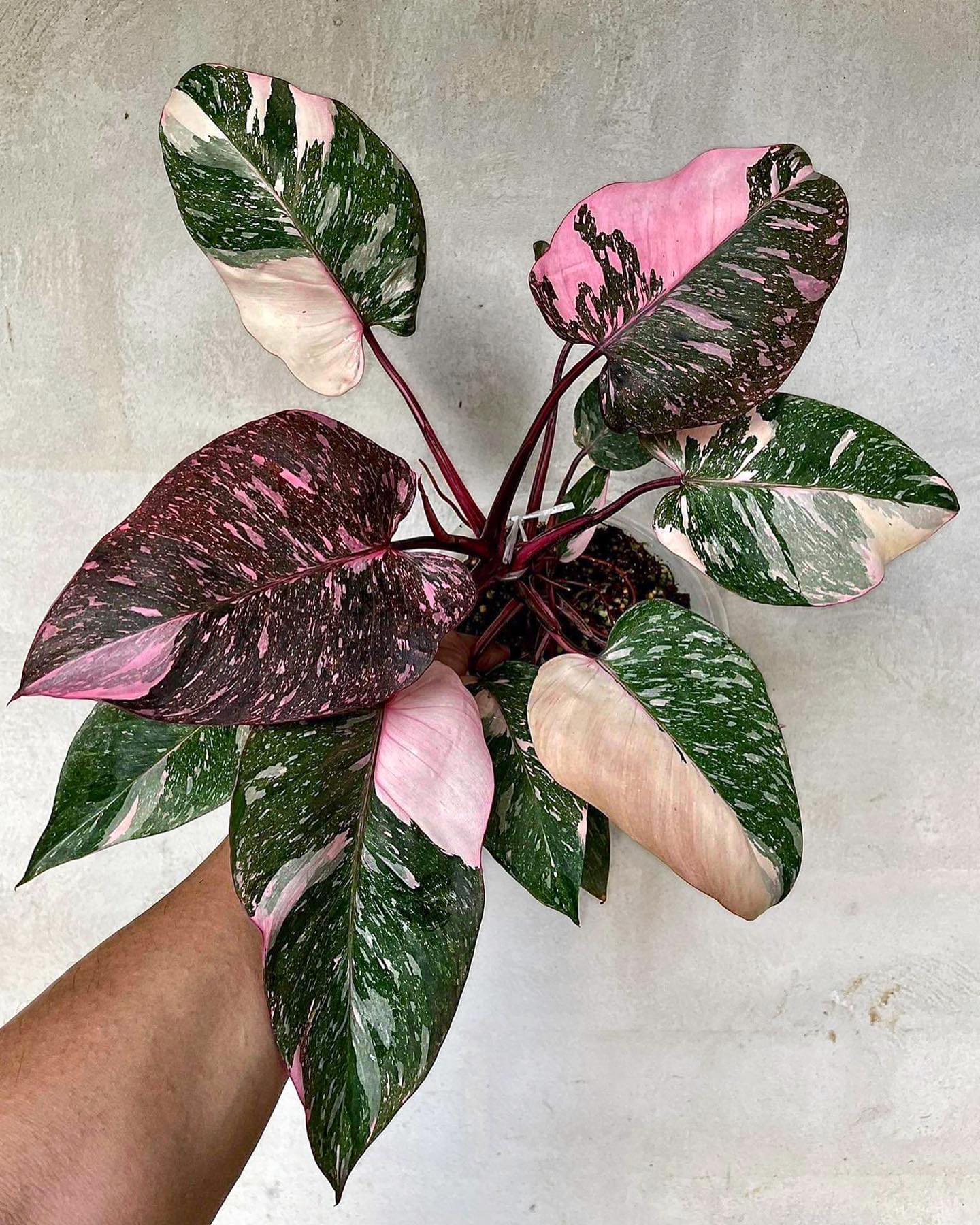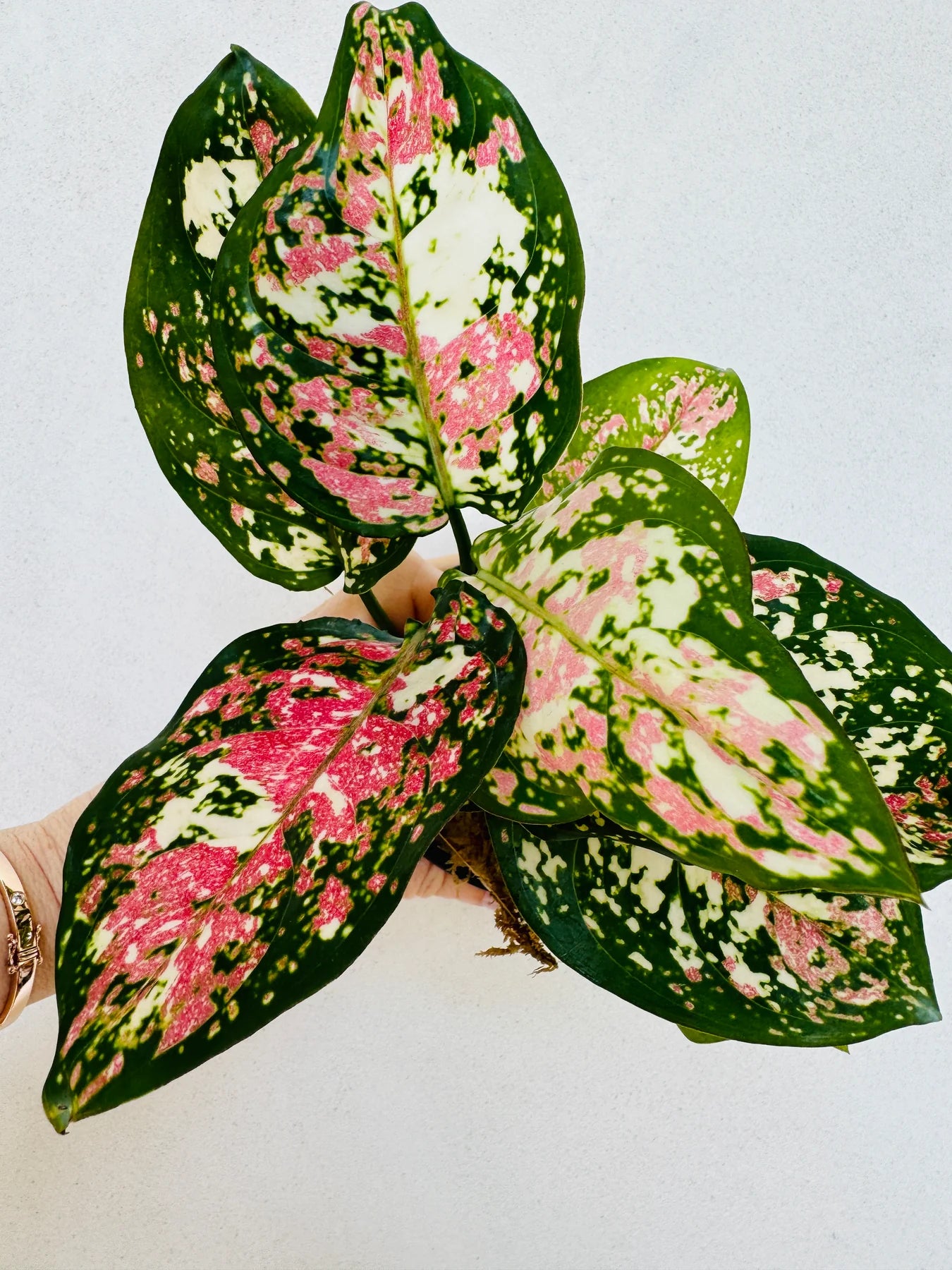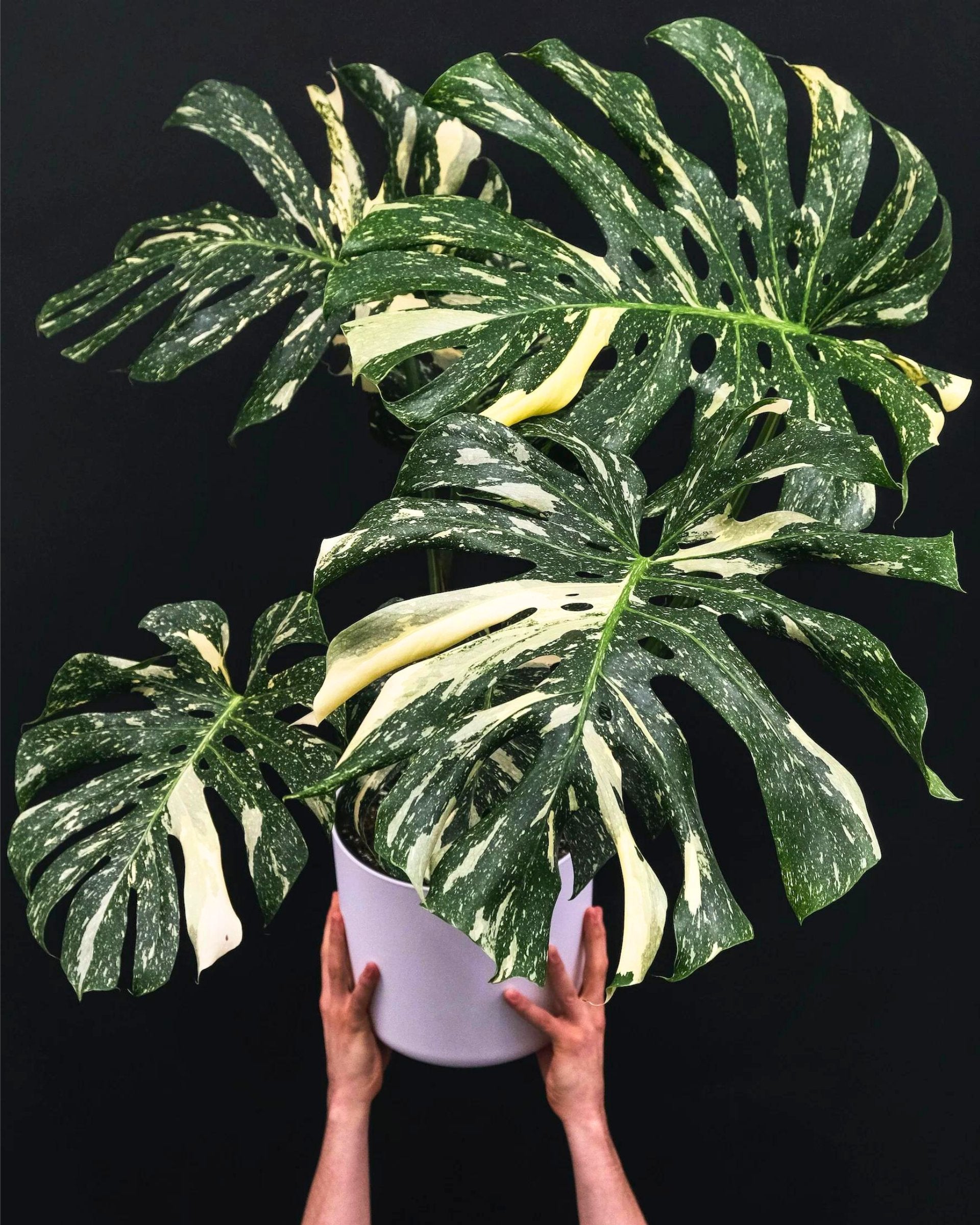How do you care for Aglaonema Anyamanee Tricolor?
Table of Contents:
- Introduction to Aglaonema Anyamanee Tricolor
- Unveiling the Aglaonema Tricolor
- Why Aglaonema Anyamanee Stands Out Among Tropical Houseplants
- Understanding Aglaonema Anyamanee Tricolor
- Origins and Distinctive Features
- The Appeal of Rare Tropical Houseplants
- Optimal Care for Aglaonema Anyamanee Tricolor
- Light Requirements for Vibrant Growth
- Watering Schedule: Balancing Moisture and Drainage
- Soil and Fertilization Needs
- Choosing the Right Soil Mix for your Anyamanee Tricolor
- Fertilization: How and When
- Climate and Humidity Preferences
- Creating an Ideal Environment
- Aglaonema Anyamanee Temperature Tolerances
- Pruning and Maintenance Tips
- Keeping Your Aglaonema Healthy and Tidy
- Dealing with Common Pests and Diseases
- Propagation Techniques
- Step-by-Step Guide to Propagating Your Aglaonema Tricolor
- Troubleshooting Common Care Issues
- Yellowing Leaves: Causes and Solutions
- Overwatering vs. Underwatering: Identifying and Correcting
- Styling with Aglaonema Anyamanee Tricolor
- Decor Tips for Displaying Your Aglaonema Tricolor
- Pairing with Other Houseplants
- The Benefits of Aglaonema Anyamanee in Your Home
- Air Purifying Qualities
- Enhancing Your Living Space with Aglaonema
- Where to Find Aglaonema Anyamanee Tricolor
- Discovering Rare Varieties at Plant Vault
- Exploring New Arrivals for Aglaonema Lovers
- Broadening Your Collection with More Aglaonema Selections
- Conclusion
- Recap of Care Tips
- Encouragement to Explore the World of Aglaonema
Introduction to Aglaonema Anyamanee Tricolor
The Aglaonema Anyamanee tricolor, a gem among rare tropical houseplants, captivates with its stunning variegated leaves, blending shades of pink, green, and cream. This care guide embarks on a journey to explore the lush world of the Aglaonema Tricolor, unveiling the secrets to nurturing this exquisite plant to its fullest potential. Ideal for both novice and experienced plant enthusiasts, the Aglaonema Anyamanee Tricolor offers a unique opportunity to add a splash of color to indoor spaces.
Discover why the Aglaonema Anyamanee is a must-have for your home or office at Plant Vault, where we offer this rare beauty among our curated selection of new arrivals.

Understanding Aglaonema Anyamanee Tricolor
Origins and Distinctive Features
Native to the tropical and subtropical regions of Asia, the Aglaonema Anyamanee tricolor is celebrated for its striking variegated foliage. Each leaf tells a story of natural artistry, making it a living masterpiece in any indoor houseplant collector’s addition.
The Appeal of Rare Tropical Houseplants
The allure of the Aglaonema Anyamanee lies in its rarity and the vibrancy it brings to any setting. As a rare tropical houseplant, it not only enhances the aesthetic of your space but also serves as a conversation starter, showcasing your unique taste in rare tropical houseplants.
Optimal Care for Aglaonema Anyamanee Tricolor
Light Requirements for Vibrant Growth
The Aglaonema Anyamanee Tricolor flourishes in medium to bright indirect sunlight. Avoid direct sunlight, which can scorch its leaves, while too little light may fade the vibrant colors. A north-facing window or a spot receiving filtered light is ideal.
Watering Schedule: Balancing Moisture and Drainage
Water your Aglaonema when the top inch of soil feels dry to the touch. This plant prefers evenly moist soil but is susceptible to root rot if overwatered. Ensure pots have good drainage and reduce watering in the winter months.
Soil and Fertilization Needs
Choosing the Right Soil Mix
A well-draining, peat-based potting mix is perfect for the Aglaonema Anyamanee Tricolor. Adding perlite or orchid bark can enhance drainage, providing the airy soil structure this plant loves.
Fertilization: How and When
Feed your Aglaonema with a balanced, slow-release fertilizer during the growing season (spring through summer). Every two months is sufficient for providing the nutrients needed for growth without overwhelming the plant.
Climate and Humidity Preferences
Creating an Ideal Environment
Aglaonema Anyamanee thrives in a warm, humid environment, typical of its native tropical habitat. Aim for temperatures between 65°F and 80°F (18°C-27°C) and boost humidity with a humidifier or pebble tray to mimic these conditions indoors.
Temperature Tolerances
Protect your Aglaonema from sudden temperature changes and cold drafts, which can cause stress and leaf damage. It’s sensitive to temperatures below 60°F (15°C).
Pruning and Maintenance Tips
Maintaining the lush, vibrant appearance of your Aglaonema Anyamanee Tricolor involves regular pruning and upkeep. Here's how to keep it looking its best:
Keeping Your Aglaonema Healthy and Tidy
- Pruning: Trim away yellowed or damaged leaves at the base to encourage new growth. Use clean, sharp scissors or pruning shears to make clean cuts.
- Cleaning: Wipe the leaves gently with a damp cloth to remove dust. This not only keeps the plant looking fresh but also improves photosynthesis.
Dealing with Common Pests and Diseases
- Aglaonema Anyamanee Tricolor can attract pests like spider mites, mealybugs, and scale insects. Regularly inspect your plant for signs of infestation.
- Treat pests promptly with insecticidal soap or neem oil, applying as directed on the product label.
- Prevent fungal diseases by ensuring the soil is well-draining and not overly moist.
Propagation Techniques
Propagating Aglaonema Anyamanee Tricolor is a rewarding way to expand your collection or share this beautiful plant with friends and family. Here's a simple guide to propagating your Aglaonema:
Step-by-Step Guide to Propagating Your Aglaonema
- Division: The easiest method is division during repotting. Gently separate the plant into smaller sections, each with its own root system, and pot them separately.
- Stem Cuttings: Cut a healthy stem, ensuring it has at least one leaf and a few root nodes. Plant the cutting in moist soil, covering the nodes. Keep the soil moist and in indirect light until new growth appears.
Troubleshooting Common Care Issues
Even with the best care, you might encounter some issues. Here's how to troubleshoot common problems:
Yellowing Leaves: Causes and Solutions
- Overwatering is a common cause. Allow the topsoil to dry out between waterings.
- Lack of nutrients can also lead to yellowing. Apply a balanced, slow-release fertilizer during the growing season.
Overwatering vs. Underwatering: Identifying and Correcting
- Overwatered Aglaonema will have soft, yellow leaves, possibly with root rot. Reduce watering and improve drainage.
- Underwatered plants will have dry, curling leaves. Increase watering frequency and consider using a moisture meter for accuracy.
Styling with Aglaonema Anyamanee Tricolor
Incorporating Aglaonema Anyamanee Tricolor into your home decor not only adds a splash of color but also purifies the air. Here are some styling tips:
Decor Tips for Displaying Your Aglaonema
- Place it in a decorative pot that complements its stunning foliage. This plant makes a great focal point in living rooms, offices, or any space that receives indirect light.
- Group it with other tropical plants of varying heights and leaf shapes to create a vibrant, indoor jungle vibe.
Pairing with Other Houseplants
- Aglaonema Anyamanee Tricolor pairs beautifully with other shade-loving tropicals such as ferns and philodendrons. Its colorful leaves contrast nicely with the green foliage of companion plants, enhancing the overall aesthetic of your plant collection.
The Benefits of Aglaonema Anyamanee in Your Home
Aglaonema Anyamanee Tricolor isn't just a pretty face; it's also a functional addition to your home. This section will delve into the air-purifying qualities of the plant and how it can enhance your living space with its vibrant colors and textures.
- Air Purifying Qualities: One of the most remarkable features of the Aglaonema Anyamanee is its ability to cleanse the air of common household toxins. Research has shown that certain indoor plants act as natural air purifiers, and the Aglaonema Anyamanee Tricolor is no exception. Its broad, variegated leaves work tirelessly to absorb pollutants such as benzene and formaldehyde, chemicals often found in household paints, solvents, and cleaners. By converting these harmful substances into harmless substances, the Aglaonema Anyamanee contributes to a healthier living environment, making it an ideal companion in spaces where clean air is a priority.
-
Enhancing Your Living Space:
Where to Find Aglaonema Anyamanee Tricolor
Finding the perfect Aglaonema Anyamanee Tricolor can be a journey. This section will provide readers with tips on where to find healthy, vibrant specimens, emphasizing the selection available at Plant Vault.
- Discovering Rare Varieties: Check out Plant Vault for a chance to explore a wide variety of Aglaonema or other unique tropical houseplants, including the rare Anyamanee Tricolor.
- Online Shopping Tips: Make sure to choose our heat pack and winter insulation combo for the cold, winter months so that your plant arrives happy and healthy!
Aglaonema Anyamanee Tricolor FAQ
Is Aglaonema Tricolor Rare?
Yes, Aglaonema Anyamanee Tricolor is considered a rare variety due to its unique tricolor leaves and lack of commercial supply, making it a sought-after plant among enthusiasts.
How Do You Care for Aglaonema Anyamanee?
Caring for Aglaonema Anyamanee involves:
- Soil: Using a well-draining, humus-rich potting mix.
- Watering: Keeping the soil consistently moist but not waterlogged. Water when the top inch of soil feels dry.
- Light: Providing bright, indirect sunlight.
- Humidity: Maintaining high humidity levels, ideally above 60%.
What Is the Common Name for Aglaonema Anyamanee?
The common name for Aglaonema Anyamanee is the Aglaonema 'Anyamanee', sometimes referred to as the "Chinese Evergreen Tricolor."
Is Aglaonema a Good House Plant?
Absolutely! Aglaonema is an excellent houseplant due to its low maintenance requirements, air-purifying qualities, and striking foliage that adds beauty to any indoor space.
How Do I Keep My Aglaonema Happy?
To keep your Aglaonema happy, ensure it receives:
- Adequate indirect sunlight.
- Regular watering to keep the soil moist.
- High humidity.
- Occasional feeding with a balanced, diluted fertilizer during the growing season.
What Does an Overwatered Aglaonema Look Like?
An overwatered Aglaonema will have yellowing leaves, a clear sign of distress, and may develop root rot, indicated by a mushy stem base and a foul smell from the soil. Overwatering should be addressed immediately by adjusting your watering schedule and ensuring proper soil drainage.



